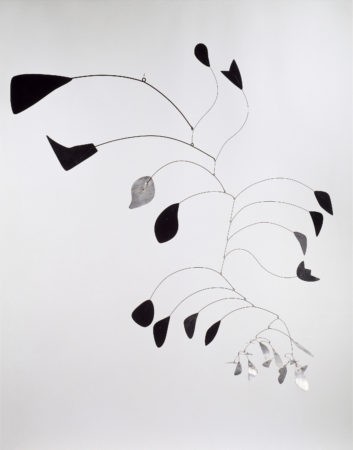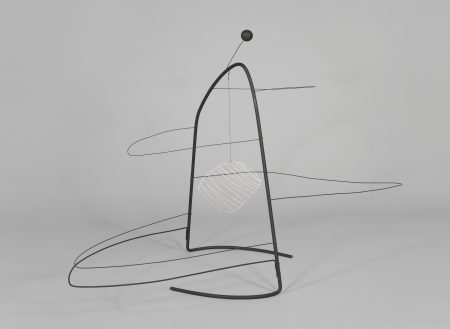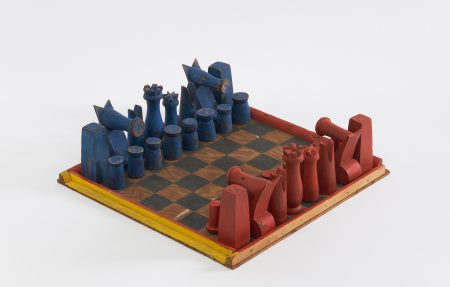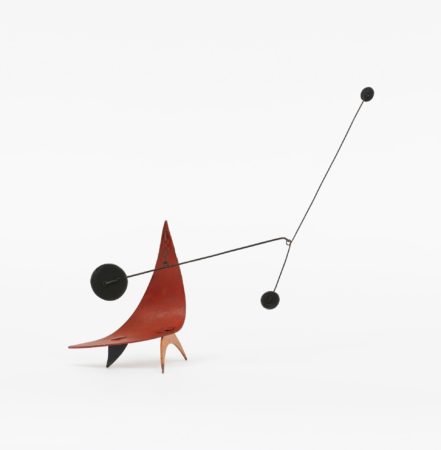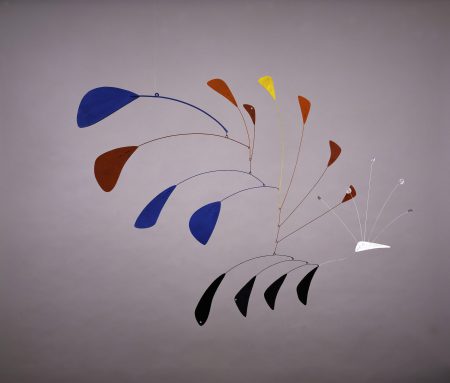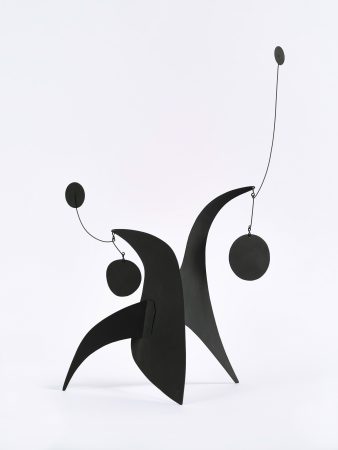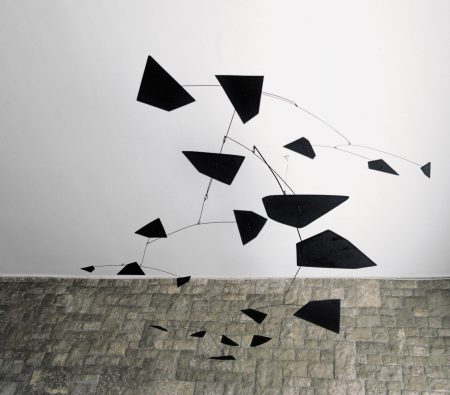Archive
“Calder: Mobiles, Stabiles, Jewelry” and “A Few Paintings by Paul Klee” are on view at the Design Project, Los Angeles. Sent along with the jewelry is an inventory book with illustrations by Calder of each piece.
CF, exhibition fileFollowing the success of the previous year, Willard planned a second jewelry show. As she wrote to Calder, I am a little concerned about the lack of “jewels” on the horizon at present . . . You will have to do prodigious work the next two months. Remember the small, well
fashioned, wearable ones are what we will cash in on.
Calder performs Cirque Calder at the Sweeneys’ apartment at 120 East End Avenue in New York.
CF, Louisa memorial fileCalder sends jewelry to Charlotte Whitney Allen in Rochester, who plans to display it for the Christmas season. The jewelry is here and it is too beautiful. I hope we will sell a lot and make our everlasting fortune. We can’t find any list of pieces. Was there one in the box or will you send it later.
CF, Allen to Calder, 4 NovemberTanguy and Kay Sage, the Surrealist painters, rent a home from their friend Hugh Chisholm in nearby Woodbury, Connecticut, and become close friends of the Calders. Rose and André Masson live in nearby New Preston.
Suther 1997, 106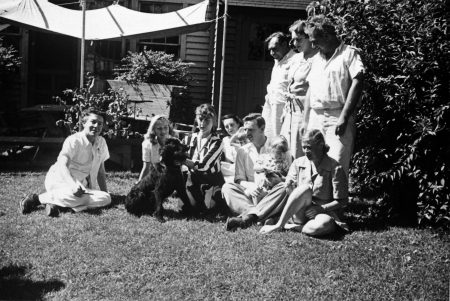
Ellen Harrison asks Calder if he is interested in exhibiting his jewelry in Washington, D.C.: Everyone is in Washington these days and there is nothing to by [sic]. I wonder if you would like to show your jewelry if a decent place for such an exhibit could be found? . . . I will ask around if you
would like to have me do so.
Elizabeth Rockwell, owner of the Outlines Gallery in Pittsburgh, writes to Calder: Starting on November 16 there is an exhibit of modern prints, woodcuts, etchings, lithographs, etc.—and I am wondering whether I might show some of your jewelry concurrently with this exhibit.
CF, Rockwell to Calder, 3 November“Mobiles by Alexander Calder, Stabiles and Jewelry” is held at the San Francisco Museum of Art. Eighty pieces of jewelry are exhibited: The “jewels” fashioned from odd pieces of metal and rocks are an adventure.
CF, exhibition file; San Francisco Chronicle, 16 NovemberAt her request, Calder sends Charlotte Whitney Allen an inventory book of the jewelry he has sent her. It is an illustrated list of each work sent drawn in a composition notebook. She thanks him in a letter for the “most explicit list” and writes that the window display of his jewelry
that she has arranged “is really quite grand and everyone is very enthusiastic.”
Calder sends thirty-five works of jewelry to Rockwell of the Outlines Gallery for inclusion in a group exhibition. An illustrated list of works accompanies the shipment.
CF, illustrated jewelry list dated by CalderWillard Gallery, New York, exhibits “Calder Jewelry.” After setting up the exhibition the previous day, Calder returns briefly to Roxbury on the morning of 8 December to pick up Louisa and bring her to New York for the show’s vernissage. Upon his arrival, Louisa informs him that the
Japanese had attacked Pearl Harbor the previous day and the United States has entered World War II.
Calder sends thirty-four works of jewelry that have recently been returned to him from his exhibitions in California to Ellen Harrison in Washington, D.C.
CF, jewelry inventory book1942
Calder meets artist Saul Steinberg.
CF, Whitney memorial programCalder is commissioned to make Red Petals for the Arts Club of Chicago.
Calder 1966, 185–86; CF, Rue Shaw to Calder, 3 March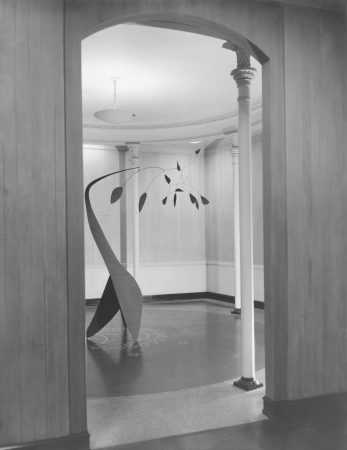
Sculptures by Calder and paintings by Miró are exhibited at Vassar College, Poughkeepsie, New York.
CF, exhibition file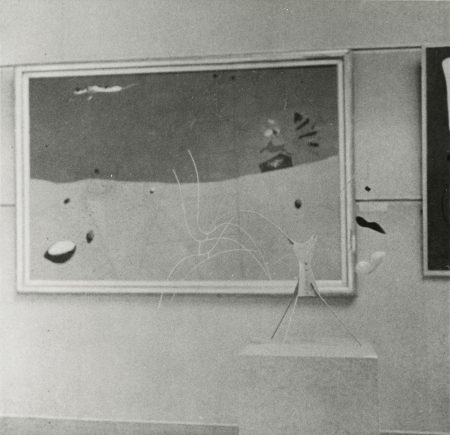
After several months with his jewelry, Rockwell of Outlines Gallery writes, Tomorrow the jewelry will be packed and sent. I would like to keep it even longer but unfortunately there seems no hope of selling more . . . I am sorry to hear that your recent exhibits have not been very successful
and I wish that I had more success with mine. The war, I suppose.
In regard to the jewelry sent from Calder the previous winter, Ellen Harrison writes, I hated to send you back your . . . things without removing even one piece last winter. Well let’s forget that one.
CF, Ellen Harrison to Calder“Calder: Recent Work” is held at the Pierre Matisse Gallery, New York.
CF, exhibition fileCalder performs Cirque Calder at Herbert and Mercedes Matter’s apartment, 328 East Forty-second Street, New York.
CF, Calder to de Creeft, 18 MayThe first issue of VVV, a Surrealist journal founded and edited by David Hare in collaboration with editorial advisers Breton and Max Ernst, is published. The issue features two Matter photographs of Calder’s Roxbury property. Written below the photographs:
In our days the aviary of all
Light and the nocturnal refuge
Of all tinkling.
The Studio of Alexander Calder, Roxbury, Conn.
The time of enchantment and the art of living.
Calder is classified 1-A (top eligibility) by the army, though he is never drafted. He studies industrial camouflage at New York University and applies for a commission in camouflage work with the Marine Corps: Although the army says that the painter is of little or no use in modern
camouflage, I feel that this is not so, and that the camoufleur is still a painter, but on an immense scale . . . and in a negative sense (for instead of creating, he demolishes a picture and reduces it to nil . . . ).
The Coordinating Council of French Relief Societies sponsors the exhibition “First Papers of Surrealism” at the Whitelaw Reid Mansion, New York, organized by Breton and Duchamp. Duchamp creates his mile of string on which he invites Calder to hang his works. Calder proceeds to
construct small paper sculptures intended as a pun on the exhibition’s title. However, Breton vetoes the collaboration, and the large standing mobile The Spider is installed.

The inaugural exhibition of Peggy Guggenheim’s Art of This Century, New York, opens with an installation designed by Frederick Kiesler. Guggenheim wears one earring by Tanguy and one earring by Calder, who is represented in the exhibition by Arc of Petals.
Lader 1981, 363–67The Calders move to 255 East Seventy-second Street. After housing Luis Buñuel and his family at 244 East Eighty-sixth Street, the Calders eventually signed over the lease to them.
CF, Masson to Calder, 12 November“Artists for Victory: An Exhibition of Contemporary American Art” is presented at the Metropolitan Museum of Art, New York; Calder wins fourth prize. Other prizewinners include de Creeft and Philip Evergood who are interviewed with Calder at the museum for a WABC Radio
program, Living Art, that broadcasts on 8 December.
Calder works on a new open form of sculpture made of carved wood and wire. They had a suggestion of some kind of cosmic nuclear gases—which I won’t try to explain. I was interested in the extremely delicate, open composition. Sweeney and Duchamp propose the name “constellations” for
these works, seven of which will be included in the artist’s upcoming retrospective at the Museum of Modern Art, New York.
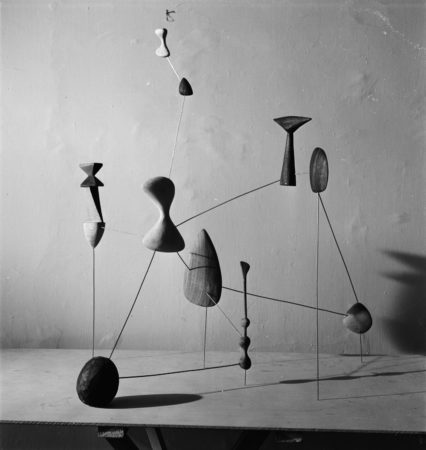
1943
Art of This Century, New York, hosts “Exhibition of Collage,” including works by Arp, Braque, Calder, Joseph Cornell, Duchamp, Ernst, Robert Motherwell, and Picasso.
Lader 1981, 375“Calder: Constellationes” is shown at the Pierre Matisse Gallery, New York.
CF, exhibition file“17 Mobiles by Alexander Calder” is held at the Addison Gallery of American Art, Andover, Massachusetts. The catalogue contains a statement by Calder: At first [my] objects were static, seeking to give a sense of cosmic relationship. Then . . . I introduced flexibility, so that the relationships
would be more general. From that I went to the use of motion for its contrapuntal value, as in good choreography.
Calder performs Cirque Calder in the Roxbury studio. Yves Tanguy assists.
CF, family photographsCalder writes to Sweeney about his forthcoming retrospective at the Museum of Modern Art, New York. I forgot to show you this object. One swings the red (iron) ball in a small circle—this movement and the inertia of the rod and the length of thread develops a very complicated
pattern of movement. The impedimenta—boxes, cymbal, bottles, cans etc. add to the complication, and also add sounds of thuds, crashes, etc.—This is a reconstruction of one I had in Paris in ’33. I will bring it down and set it up for you to see. I call it the “Small Sphere and Heavy Sphere.”
Arnold Newman photographs Calder at the Museum of Modern Art, New York.
CF, photography file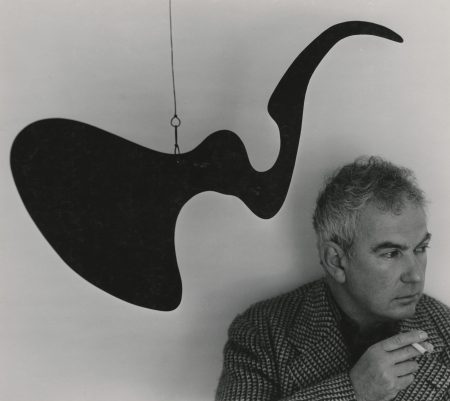
The Museum of Modern Art, New York, presents “Alexander Calder: Sculptures and Constructions,” curated by Sweeney and Duchamp. Calder writes, Simplicity of equipment and an adventurous spirit in attacking the unfamiliar or unknown are apt to result in a primitive and
vigorous art. Somehow the primitive is usually much stronger than art in which technique and flourish abound. Originally scheduled to close on 28 November 1943, the exhibition is extended to 16 January 1944 due to public demand.

Calder gives two performances of Cirque Calder in the Members Room of the Museum of Modern Art, New York, for friends and staff.
CF, exhibition filePeggy Guggenheim presents “Natural, Insane, Surrealist Art” at Art of This Century, New York. Organized with Ladislas Segy, the exhibition features two works by Calder, as well as works by Ernst, Klee, Masson, Roberto Matta, Miró, and Tanguy, among others.
Lader 1981, 385Calder travels to Chicago to prepare for his exhibition of jewelry at the Arts Club.
CF, exhibition file; NL, Calder to Shaw, 13 November; Calder 1966, 185The Arts Club of Chicago exhibits “Jewelry by Alexander Calder.”
CF, exhibition file; NL, Calder to Shaw, 13 November; Calder 1966, 185Both the “Big Room” and part of the Roxbury farmhouse are destroyed by an electrical fire. Louisa tells Calder about the fire when he joins them on 7 December. What was destroyed was the icehouse, my original workshop, where the electricity had probably shorted, and the
woodshed and a corner of the bathroom. The toilet, which was of china, had exploded. It must have been a dreary business for Louisa and Malcolm to drag all they could save to my new shop—this seemed to fill it completely when I got there. Gone were the unencumbered spaces.
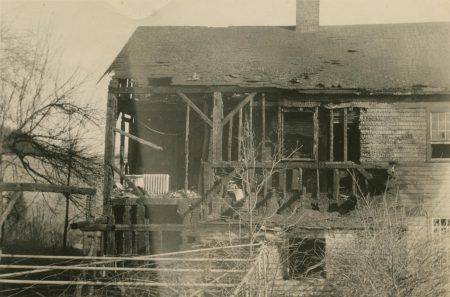
1944
Agnes Rindge Claflin writes and narrates Alexander Calder: Sculpture and Constructions, a film based on the retrospective at the Museum of Modern Art, New York. Cinematography is by Matter.
CF, project fileCalder gives Black Flower to the Museum of Western Art in Moscow.
Calder 1966, 185
Calder visits Mondrian in the hospital shortly after he lapses into a coma. Calder is among those present—with Richter, Dudensing, Sweeney, and others—when Mondrian dies at 5:08 a.m.
CF, Holtzman diary, 1 FebruaryCalder attends Mondrian’s memorial service at the Universal Chapel at Lexington Avenue and Fifty-second Street, New York.
Bois 1994, 85“Color and Space in Modern Art Since 1900” is on view at Mortimer Brandt, New York. The exhibition includes three sculptures by Calder, including Cage within a Cage and Morning Star.
MA, brochureCalder’s Black Flower is loaned by the Russian Embassy in Washington, D.C., to “Calder: Paintings, Mobiles, Stabiles and Jewelry,” held at the local gallery France Forever. Calder attends the preview on 26 March, organized under the patronage of Henri Hoppenot, Minister
Plenipotentiary, Delegate of the French Committee of National Liberation, and he performs Cirque Calder on 25 and 26 March at the Dance Playhouse, through the courtesy of Evelyn Davis.
Calder makes the acquaintance of Keith Warner, owner of a leather manufacturing company and already a patron of several artists. He also becomes a devoted supporter of Calder. Until his death in 1959, Warner commissions dozens of works by Calder, including at least ten
works of jewelry for his wife, Edna. Among these are some substantial pieces fashioned from gold.
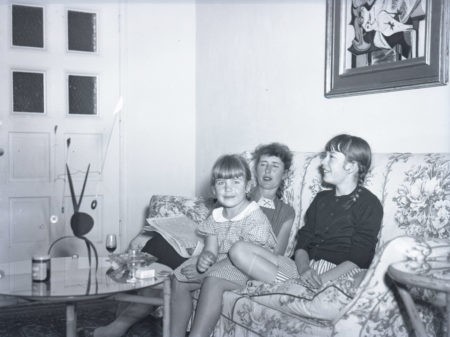
In New York, Calder meets Brazilian architect Henrique Mindlin.
Calder 1966, 198The Calders live in the Tanguy-Sage household in Woodbury, Connecticut, while the burned home is repaired. Nitzschke made some very nice plans for the rebuilding + enlargement of the shop, but we are still awaiting …. In the kitchen [the] partition between it + the dining room has
been removed, and we have steel French windows (6′ wide) and a door leading outside.
Curt Valentin publishes Three Young Rats and Other Rhymes, with eighty-five drawings by Calder and edited by Sweeney.
CF, project fileCalder is represented by a work on paper in the exhibition “Abstract and Surrealist Art in the United States” at the San Francisco Museum of Art.
CF, exhibition fileThe exhibition “Recent Work by Alexander Calder” at Buchholz Gallery/Curt Valentin, New York, includes recent plaster and bronze sculptures and the drawings for Three Young Rats and Other Rhymes.
CF, exhibition file“The Imagery of Chess: A Group Exhibition of Paintings, Sculpture, Newly Designed Chessmen, Music, and Miscellany” is presented at Julien Levy Gallery, New York. Calder exhibits two chess sets alongside works by Duchamp, Ernst, and Tanguy, among others.
CF, exhibition fileAfter complaining to Calder that she has nothing to wear to the upcoming Vassar College Christmas party, Claflin receives a tiara that Calder dubs Fire Proof Veil. The headpiece is constructed of a series of sheet metal letters, “A, R, V, C, P, N, Y,” each dangling from its own wire
attached to a central headband. The letters stand for “Agnes Rindge Vassar College Poughkeepsie New York” and are designed to hang in front of the wearer’s face.
1945
Calder’s father, Alexander Stirling Calder, dies in Brooklyn. Calder and Louisa leave their daughters in the care of the Massons and bury Stirling in Philadelphia.
ASCR conversation with Mary Calder Rower, 16 November 1997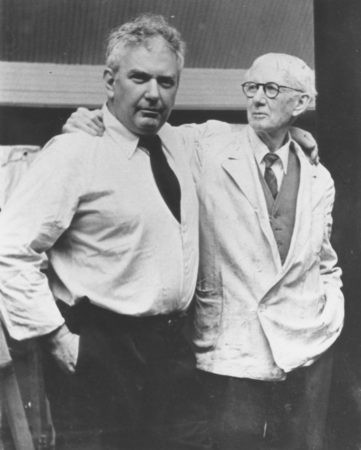
Buchholz Gallery/Curt Valentin, New York, presents “Recent Work by American Sculptors” and includes a standing mobile by Calder.
AAA, catalogueCalder receives a contract from composer Remi Gassmann on behalf of the University of Chicago for the design of costumes and scenery for the dance project Billy Sunday.
CF, Gassmann to Calder, 14 March; CF, Calder to Warner, 6 March, 2 AprilMasson brings French author and philosopher Jean-Paul Sartre to visit Calder in Roxbury.
CF, Calder to Zervos, 25 May; Calder 1966, 188–89Commissioned by the Museum of Modern Art, New York, to make a work for the sculpture garden, Calder creates Man-Eater with Pennants.
CF, Calder to Warner, 1 June
The Museum of Modern Art, New York, presents the First Exhibition of the Museum Collection of Painting and Sculpture. Calder is represented by five sculptures.
CF, exhibition fileCalder produces a series of small-scale works, many from scraps trimmed during the making of other objects. Let’s mail these little objects to [Louis] Carré, in Paris, and have a show, Duchamp suggests when he sees them; by taking advantage of the newly available international
airmail system, Duchamp’s action predates “mail art” by nearly two decades. Carré responds to Duchamp’s proposal. Interested show Calder miniatures would also gladly exhibit mobile sculptures available all sizes and colours.
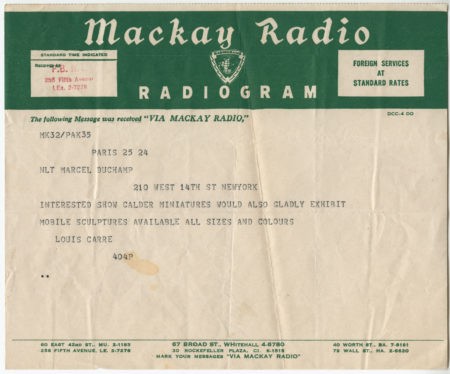
Calder packs thirty-seven miniature mobiles and stabiles into six small cartons and mails them to Carré in Paris. Due to U.S. Postal Service regulations, he gives the name of six different senders for each package: himself, Duchamp, Masson, Sweeney, Tanguy, and Renée
(Ritou) Nitzschke.
Calder proposes to Carré to have Sartre write an essay for his show. I met Jean-Paul Sartre when he was here, and he came + visited my workshop. Perhaps he would consent to write a little preface if you thought that desirable.
CF, Calder to Carré, 19 JulyIntrigued by the limitations on parcel size imposed by the U.S. Postal Service, Calder begins creating larger works for his show at Galerie Louis Carré that are collapsible and intended to be reassembled upon arrival in Paris.
CF, Calder to Carré, 14 August; Calder 1966, 188“Gay, Fantastic Gouaches by Calder” is on view at Samuel M. Kootz Gallery, New York.
CF, exhibition fileBuchholz Gallery/Curt Valentin, New York, presents “Alexander Calder.”
CF, exhibition file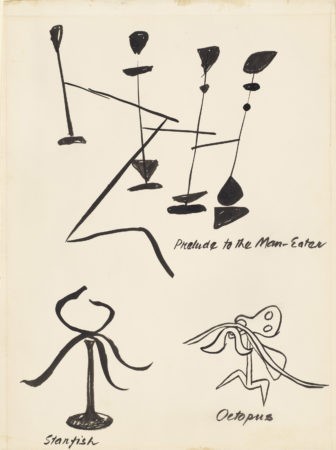
1946
When Sartre visits Calder again at his studio in New York, the artist gives him Peacock, a mobile whose elements are cut from flattened 1940 Connecticut license plates.
Calder 1966, 188–89Thomas Emery’s Sons, Inc., commissions Calder to create a mobile, Twenty Leaves and an Apple, for the Terrace Plaza Hotel, Cincinnati, designed by Gordon Bunshaft of Skidmore, Owings & Merrill.
CF, project fileThe Rime of the Ancient Mariner by Samuel Taylor Coleridge, with twenty-nine illustrations by Calder and an essay by Robert Penn Warren, is published in New York by Reynal and Hitchcock.
CF, project file“Origins of Modern Sculpture” is presented at the Detroit Institute of the Arts and travels to the City Art Museum of St. Louis.
CF, exhibition fileThe Calders take a road trip to Fort Lauderdale, Florida, and visit Edna and Keith Warner.
CF, Warner correspondenceThe Clay Club Gallery, New York, presents “Benefit: Exhibition of Sale of Sculpture to Help Raise Funds for the Sculpture Center” and includes a standing mobile by Calder.
CF, exhibition fileCalder inquires with Willard whether she would be interested in having him make jewelry in gold, a material with which he is interested in working: I’d like to make some stuff in gold—but it makes a larger investment—shall we get into that racket?
CF, Calder to Willard, 12 MayCalder takes his first transatlantic flight from New York to Paris to prepare for the exhibition at Galerie Louis Carré, Paris.
CF, passport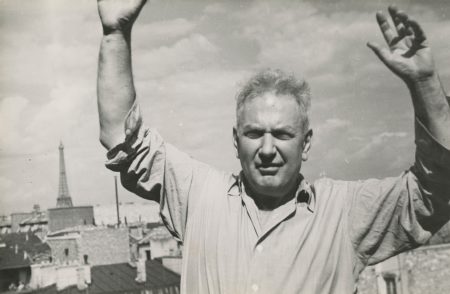
The exhibition at Galerie Louis Carré is delayed and Calder returns to New York.
Calder 1966, 189; MoMA, Calder to Valentin, 6 AugustCalder and Louisa attend the premiere of Pádraic Colum’s play Balloon with mobile sets by Calder, performed at the Ogunquit Playhouse, Maine.
CF, Calder to Warner, JulyIn a series of letters, Calder and Keith Warner begin discussing the terms of Calder creating gold jewelry for Warner’s wife: Would it be a fair proposition if I asked, as recompense, that you buy me an equal amount of gold? I have been wanting to make some more things of gold for Louisa and for
the kids (as “heirlooms”) but never seem to be able to afford the gold.
Calder holds a performance of Cirque Calder in the family’s Roxbury studio for his daughters. I have to show the children how to run it so that they can carry on.
CF, Calder to Warner, 30 AugustCalder’s jewelry is included in the large group exhibition “Modern Jewelry Design” at the Museum of Modern Art, New York. Over the next two years, the show travels to museums in fifteen different cities throughout the United States.
CF, exhibition fileCalder returns to Paris.
CF, passportCalder stays at Hôtel de Versailles, Paris.
CF, object file“4 Modern Sculptors: Brancusi, Calder, Lipchitz, Moore” is presented at the Cincinnati Modern Art Society.
CF, exhibition file
“Alexander Calder: Mobiles, Stabiles, Constellations” is on view at Galerie Louis Carré, Paris. Henri Matisse attends the exhibition. Along with photographs by Matter, the catalogue includes two essays—Sartre’s “Les Mobiles de Calder” and Sweeney’s “Alexander
Calder.”

Jean Painlevé films Calder’s works in Paris. It is his second motion picture footage of mobiles in motion.
CF, project fileCalder sails from Le Havre to New York on the John Ericsson.
Calder 1966, 194; CF, passportIrving Penn photographs Calder in Roxbury.
CF, photography file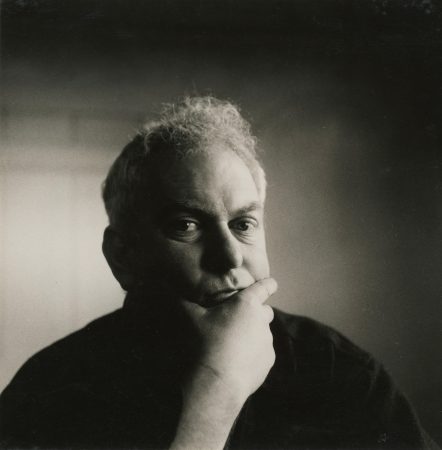
1947
Calder’s work is on view at the Portland Art Museum, Oregon.
CF, exhibition fileThe Mirós and their daughter, Dolores, arrive in the United States. So I drove the LaSalle (open, top down) straight to La Guardia, and got there just in time. So we installed them in a little apt. on 1st Ave. (very nice), and then had a bite at Matisse’s.
CF, Calder to Warner, 15 FebruaryThe San Francisco Museum of Art exhibits Calder’s work.
CF, exhibition fileThe Mirós arrive at the Calders’ home in Roxbury for a visit.
SM, Miró to Sandberg, 7 MarchCalder performs Cirque Calder at his home in Roxbury for the Mirós; Henri Seyrig (Director of the Institut Français d’Archéologie); and Henrique and Helena Mindlin.
SM, Miró to Sandberg, 7 March; CF, Calder 1955–56, 155Mattatuck Historical Society, Connecticut, presents “Alexander Calder.”
CF, exhibition fileMiró celebrates his and Sandra’s birthday with the Calders at their apartment on East Seventy-second Street, New York. He gives Sandra a drawing and she gives the Mirós an ink and collage butterfly. Calder presents Miró with a mobile personage made of animal bones.
ASCR conversation with Mary Calder Rower, 16 November 1997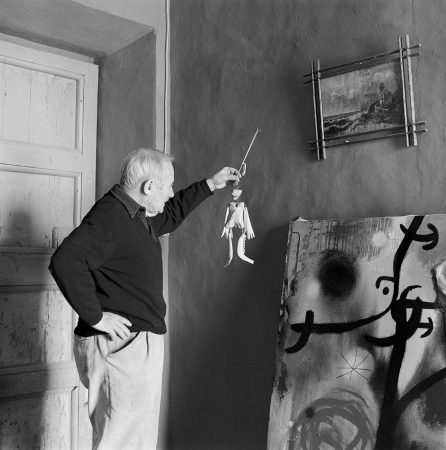
Kunsthalle Bern, Switzerland, presents “Calder, Léger, Bodmer, Leuppi.”
CF, exhibition file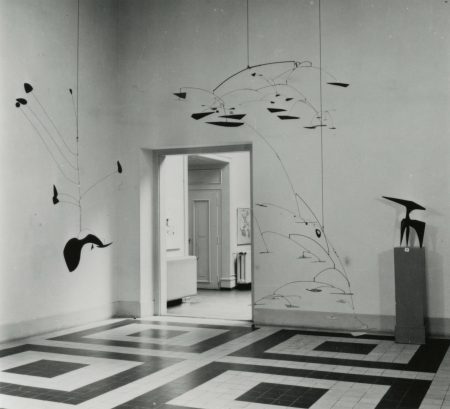
Calder trades the mobile Polygones noirs for Miró’s Femmes et oiseaux dans la nuit, a painting related to Miró’s mural for the Terrace Plaza Hotel.
CF, object fileThe Stable, New Haven, Connecticut, exhibits “Alexander Calder.”
CF, exhibition fileCalder exhibits Explosive Object in the “Exposition de peintures et sculptures contemporaines,” Palais des Papes, Avignon.
CF, exhibition file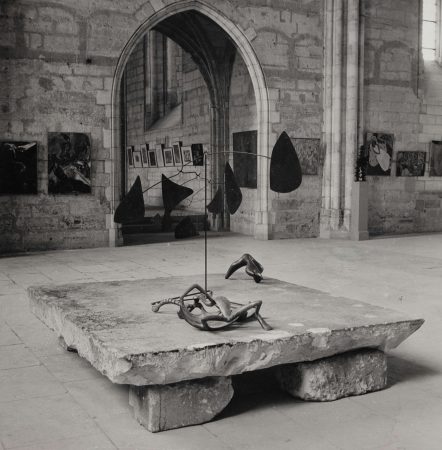
“Exposition Internationale du Surréalisme” is organized by Breton and Duchamp for Galerie Maeght, Paris. Calder contributes a mobile and produces a lithograph for the catalogue, Le Surréalisme en 1947.
The Calders visit Long Island.
CF, Calder to Warner, 2 July; CF, Calder to Valentin, 15 JulyCarl Van Vechten photographs Calder.
CF, object file
“Alexander Calder / Fernand Léger” is presented at the Stedelijk Museum, Amsterdam.
CF, exhibition fileHans Richter’s film, Dreams That Money Can Buy, is finally released after being in production since 1945. Two sequences are made with Calder’s collaboration: “Ballet,” the fifth dream, and “Circus,” the sixth dream. The film wins the International Award for Best Original Contribution to the
Progress of Cinematography at the Venice Film Festival.
